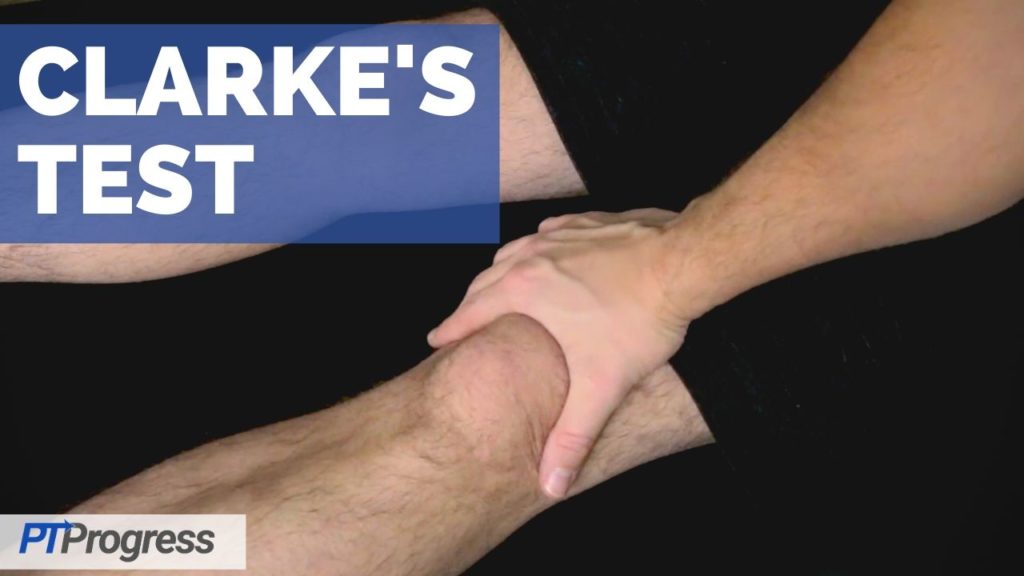
Purpose: The Clarke’s test is used to identify pathology of the patellar cartilage and is a helpful test in diagnosing patellofemoral pain syndrome, chondromalacia patellae, and patellofemoral arthritis.
How to Perform Clarke’s Test
Position of Patient: The patient should be relaxed in the supine position with the knee fully extended.
Performance: The examiner will place their hand along the superior border of the patella applying a downward and inferior pressure along the patella. Instruct the patient to contract their quadriceps muscle while you apply pressure at the patella.
How to Interpret Clarke’s Test
Positive Finding: A positive test includes pain or apprehension during the quad contraction, indicating patellar dysfunction such as chondromalacia, arthritis, or other patellar pathology.
Test Accuracy / Reliability / Evidence:
Clarke Sign in Assessing Chondromalacia Patella
Sensitivity = 0.39
Specificity = 0.67
+LR = 1.18
-LR = 0.39
Research Source: Doberstein, S. T., Romeyn, R. L., & Reineke, D. M. (2008). The Diagnostic Value of the Clarke Sign in Assessing Chondromalacia Patella. Journal of Athletic Training, 43(2), 190–196. doi: 10.4085/1062-6050-43.2.190
Clarke’s Test Video
Next Knee Special Test: McMurray Test

